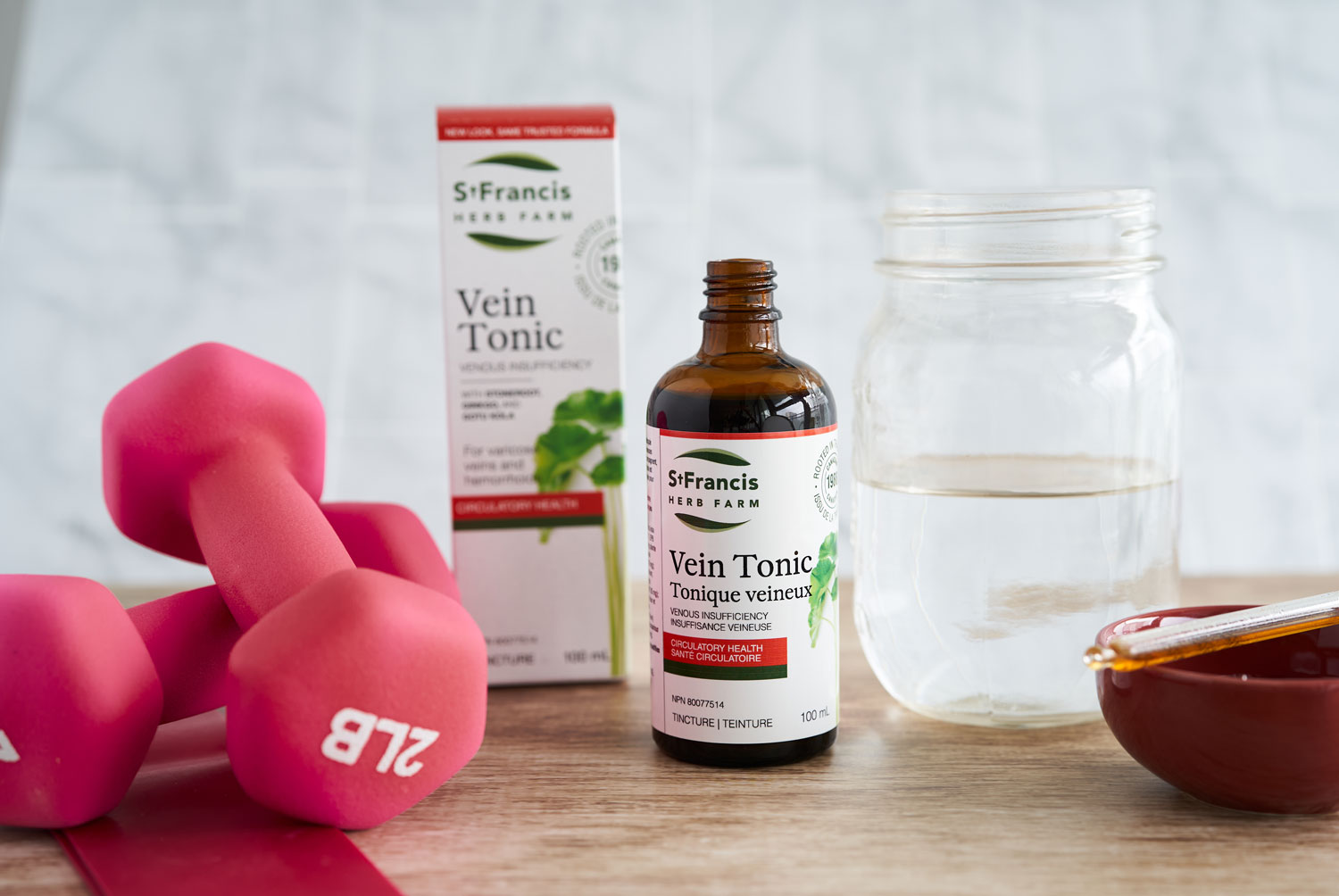It’s no secret that women have specific health needs. They have a unique physiology, which is reflected in aspects of hormonal, mental, structural – and cardiovascular health.
Imbalances in the cardiovascular system can show up in the body in many ways, one being varicose veins – enlarged veins that often occur in the legs. While often a cosmetic concern for their darkened and/or bulging, twisted appearance – they can also come with symptoms of aching, heaviness, and burning in the legs or lead to a more serious condition. Spider veins are similar, but smaller, flatter, and sometimes web-like in appearance.
How do Varicose Veins Appear?
The human circulatory system is made up of a network of blood vessels: those that carry oxygen-rich blood away from the heart to capillaries in tissue throughout the body are arteries. Veins, on the other hand, return blood to the heart, in a one-way flowing system controlled by valves.
Veins can become weakened and develop ‘chronic dilation’, where valves no longer seal properly, and blood can flow backwards and pool – visible in varicose veins. These are often seen in legs, where veins must work pumping blood against gravity to get the blood back up the heart.
Why Women are at Greater Risk
Women are four times as likely as men to have varicose veins. The main reason for this is the hormonal phases and fluctuations throughout a woman’s life: the monthly menstrual cycle, pregnancy, and menopause, which influence venous health by relaxing the walls of the veins. Many pregnant women experience a flare up of varicose veins, as the increased volume of blood can put more pressure on veins. Use of birth control pills, estrogen, and progesterone can also be contributing factors.
Other factors that can contribute include:
- weight
- age
- genetics
- sedentary lifestyle
- sitting or standing for extended periods
The Difference of a Daily Vein Tonic
Regular activity and movement, leg elevation and a healthy diet can all support efficient blood flow, but herbal support can make all the difference in helping to relieve symptoms of sluggish venous circulation, and even help to prevent varicose veins from worsening.
Vein Tonic consists of herbs uniquely focused on the circulatory system, including:
Horse Chestnut (Aesculus hippocastanum, seed) Contains active ingredient aescin, which decreases capillary permeability, and helps relieve symptoms of chronic venous insufficiency (CVI). Improves vein tone by promoting prostaglandins, which induce contraction of veins.
Stoneroot (Collinsonia canadensis, root) A classic astringent tonic herb for the veins.
Hawthorn (Crataegus monogyna, leaf, flower, and berry) “The heart herb” valued for its properties in strengthening the arteries, veins, and heart.
Gotu Kola (Centella asiatica, tops) Known as “the herb of longevity – possesses antioxidant benefits and can help improve circulation.
Ginkgo (Ginkgo biloba, leaf) Can help reduce swelling and increase blood flow by promoting the dilation of vascular (vein) walls.
Yarrow (Achillea millefolium, leaf and flower) An antispasmodic herb ideal as a vein tonic.
Vein tonic isn’t just for women. Daily efforts to improve circulatory health for women and men are easily enriched by adding Vein Tonic to your health regimen. Simply taking ½ teaspoon (3 ml) twice daily can help relieve feelings of heaviness, itchiness, swelling and achiness in the legs associated with varicose veins, as well as supporting chronic venous insufficiency and offering relief from hemorrhoids – all by helping to get your blood going with the (healthy) flow!
It’s also important to remember that venous problems aren’t always visible. If you have a previous health condition and/or suspect any circulatory issues, consult with your health practitioner.
* Vein Tonic is not suitable for pregnant or breastfeeding women.
References available upon request.



